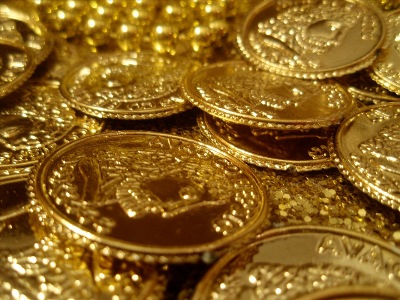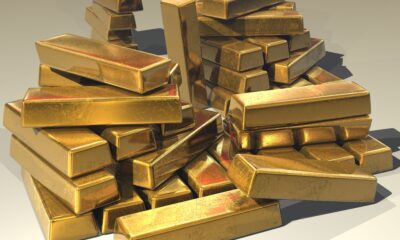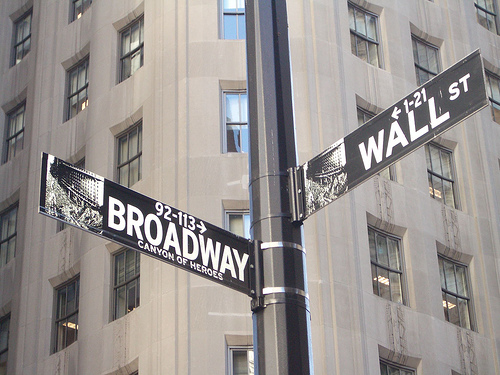Money matters
Returning to a store of value

Conventional discussion about the prices of gold, silver, copper, and other commodities tends to treat the investment in each as a speculative game, or even a manipulative one, and arguably a dangerous one. Yet the real danger is to continue to place one’s faith in a “commodity” that represents no value, but only a feckless government’s word.
According to GoldPrice.org, gold has more than doubled in price in the last five years, including a 30 percent rise over the last twelve months alone, and a five-percent rise over the last thirty days. Furthermore, the gold contracts show a trend that is not likely to stop; the further in the future is the delivery date, the higher the price.
Silver has not risen nearly as fast—32 percent in five years, with most of the rise occurring relatively recently. A more striking indicator is the gold-to-silver ratio, which has increased markedly in the last five years and is only now starting to decline as silver starts to catch up with gold. The reason: most investors do not respect silver as much as gold, and forget that silver has industrial uses, in addition to its use in jewelry.
Everyone who watches commodity markets has his own opinion. Most of these opinions fall into two groups:
- Gold and silver are at their peaks and are about to fall, and fast.
- Gold and silver have nowhere to go but up.
The first group gives the usual reasons: precious metals are expensive, previous buyers bought because they panicked, and certain policies that have driven prices up cannot or will not continue. This represents typical conventional thinking. Such “experts” almost never look at the underlying circumstances of any trend in the price of anything—or when they do look at them, they mistakenly assume (or hope) that circumstances have not undergone a fundamental sea change.
And then the realists speak, and remind everyone that none of those assumptions are safe:
- Are precious metals expensive? In fact, both gold and silver have been more expensive in the past, when one adjusts the value of the dollar for inflation.
- Are people panicking? One man’s panic is another man’s reasonable assessment of a clear and present danger, and the proper response to it, to say nothing of a more fundamental reason to prefer a genuine store of value to a strictly imaginary value. (Imaginary numbers might have their place in engineering, but not in finance.)
- Will the policies that have driven gold and silver up, suddenly reverse themselves? No. Those policies serve the final aims of those who make them.
This article at Commodity Online illustrates everything that is wrong with conventional thinking. Author Renisha Chainani clearly knows better than to conclude that silver, for example, will fall. The following facts show her command of the situation:
The U.S. dollar has lost 20% of its purchasing power just since 2000 and 30% since 1990. 70% of that decline has been since 1978, when the mandate for the Fed was changed to a dual mandate of both price stability and full employment. Since the Federal Reserve was created in 1913, the USD has lost 95% of its purchasing power. Reason for Dollar weakness is low interest rate scenario and two quantitative easing measures announced by FED.
Further on, she admits that silver once traded at $50 per Troy ounce, equivalent to $130 today. It’s trading at $45.62 at the time of this writing. What makes Chainani or any other expert think that silver is expensive? In fact, silver is shockingly cheap, considering its industrial uses in everything from computers to catalysts. And furthermore, China is already buying gold, and retaining the silver from its own mines. A precious-metals dealer told this reporter only yesterday that the Chinese have bought gold and silver for years and are about to buy a lot more:
They’re sitting on about three billion US dollars, and those dollars are losing value, so they have to protect their value.
These sources confirm that this buying is happening today.
Add to it that Standard and Poor’s is very much afraid that United States bonds will lose their AAA rating, and have said so officially.
Chainani knows this. But she then asserts that the “twenty-year cycle” still exists, when that cycle never had a sound foundation anyway, and has even less reason to hold today. Her attempts to discuss the reasons why silver and gold are advancing are feeble. For example, she asserts that “the US is not Greece or Japan” and suggests that the US could solve all its budget problems by cutting military spending. Even a complete stand-down of the United States Armed Services would not suffice to close a $1.5 trillion deficit, much less begin to repay the massive load of sovereign debt. (And if Chainani really believes that the present administration will get the country’s fiscal house in order, then your editor has a partnership stake in a bridge spanning the Potomac River that he would like to offer for sale.)
Yesterday’s one-day decline in gold and silver, ahead of Federal Reserve Chairman Ben Bernanke’s press conference today, will not break this trend. Prices of both metals are rising already, and gold looks to recoup every dollar it lost in yesterday’s trading and set a new record.
Clearly, people are returning to gold and silver, not merely as an investment, but as a store of value. Indeed, this source has already heard from someone who recently bought farm equipment and offered silver, and not paper money, to pay for it:
From a friend in Iowa I received an email reporting that a friend had gone to buy a US$7,300 piece of farm equipment. When it came time to pay, his friend asked the dealer, “Do you want paper, silver, or gold?”
The dealer brightened and said, “Silver, and I’ll give you a discount if you pay in silver.”
Behold, the new economy!
A discount for paying in silver coin means that the dealer knows two things:
- Silver is very cheap at its current price and not likely to stay cheap.
- The US dollar, a thing of no intrinsic value, is losing all its extrinsic value with no end in sight.
Conclusion: gold and silver will rise and continue to rise. Nothing will stop this short of an election.
Image credit: “Pirate’s Gold” by Mykl Roventine at flickr.com; obtained from Fotopedia (CC BY 3.0)
Terry A. Hurlbut has been a student of politics, philosophy, and science for more than 35 years. He is a graduate of Yale College and has served as a physician-level laboratory administrator in a 250-bed community hospital. He also is a serious student of the Bible, is conversant in its two primary original languages, and has followed the creation-science movement closely since 1993.

-

 Civilization5 days ago
Civilization5 days agoOn the 2025 National Security Strategy
-

 Civilization3 days ago
Civilization3 days agoIvory Tower Thinking and Narcotics Boats
-

 Executive2 days ago
Executive2 days agoThe Last Supper: New York’s Socialist Feast
-

 Executive4 days ago
Executive4 days agoWaste of the Day: Shockingly, Inmate Phone Calls Lead to More Criminal Activity
-

 Civilization2 days ago
Civilization2 days agoYoo Hoo, VP Vance—Your Character is Showing!
-

 Executive4 days ago
Executive4 days agoWH Ignores Demands From Pro Life Lobby To Fire FDA Commissioner
-

 Civilization4 days ago
Civilization4 days agoGeneral Misconduct: There Is an ‘I’ in Milley
-

 Civilization2 days ago
Civilization2 days agoFacing Facts & Rolling Back Mythologies: The New National Security Strategy










